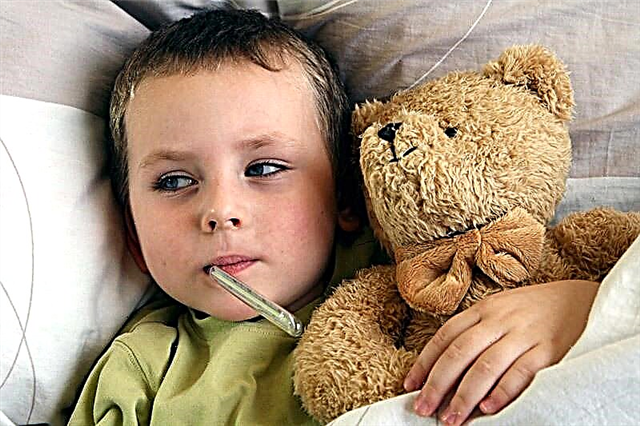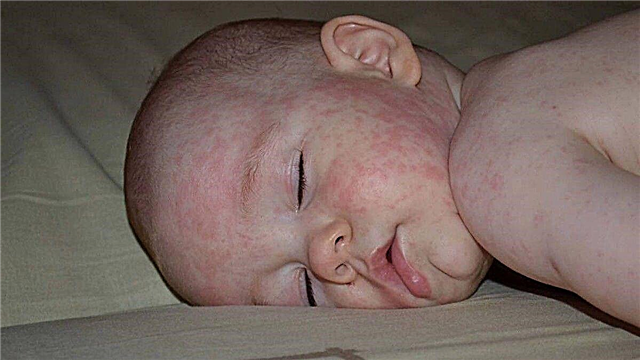
About 3% of parents encounter geographic language in children. The disease of a dystrophic nature received this name for the similarity of the type of the child's tongue with the world map - spots appear on it, resembling continents in outlines. In medicine, pathology has an official name - desquamative glossitis.

What it is?
Geographic tongue is damage to the mucous membrane covering the surface of the uvula. The surface pattern is formed by local desquamations. The affected areas show signs of inflammation, white, raised contours, consisting of necrotic particles of the epithelium. The papillae of the tongue, rich in taste buds, undergo significant degenerative changes. The lateral parts of the organ and the back of the tongue are usually affected.
Whether desquamative glossitis is considered a pathology is a big question. Some experts are sure that this is exactly what they attribute the geographical language to diseases of the oral cavity, others argue that this is an individual feature, and it is unreasonable and short-sighted to attribute it to pathology.
In any case, dystrophic changes in the area of the tongue can be present in a child for quite a long time - from several weeks to several years.

Causes of occurrence
The complete list of reasons that can lead to the development of desquamative glossitis is currently unknown to science. Many versions are considered, according to which the geographical language is rarely considered as a separate pathology, more often as a symptom of certain pathologies. It is believed that children who are prone to allergies, diathesis, atopic dermatitis, and exudative diathesis are more susceptible to the disease.... In such children, an unusual language is found much more often than the average norm, up to 60% of children with such diagnoses experience signs of desquamative glossitis.
The geographic language can manifest itself with significant metabolic disorders, with a pathological lack of B vitamins, as well as with diseases of the gastrointestinal tract (peptic ulcer, gastritis, gastroduodenitis). In hepatitis, chronic pancreatitis, an unusual tongue pattern occurs in about 15% of cases, sometimes desquamative glossitis occurs against the background of the formation of benign and malignant tumors, but a direct connection between them has not been established.
The disease often accompanies autoimmune pathologies, for example, juvenile rheumatoid arthritis or systemic lupus erythematosus. After severe viral infections, the formation of unusual spots on the tongue is also possible.
Doctors tend to believe that a key role in the formation of desquamation in the tongue may belong to long-standing helminthic invasions and dental ailments.

In infants, the geographic tongue may appear during the period of teething of milk teeth, and in this case you should not worry too much - after the teeth have erupted, the color of the tongue will again acquire normal natural characteristics... Another safe reason is puberty. Such a phenomenon as desquamative glossitis can manifest itself before the first menstruation in girls. Once the cycle is established, the problem also resolves itself.
And one more reason why characteristic “geographical” spots may appear on the tongue of a baby is quite common - it is heredity.
If one of the parents or from the generation of grandparents suffered from a similar problem, it may well be inherited. In this case, an unusual language is observed literally from birth.

Symptoms
In the vast majority of cases, there are no pronounced symptoms and signs of the condition. Spots on the tongue do not cause noticeable discomfort to children, and most often, pediatric dentists are the first to detect pathology at the next routine examination of a child or when contacting for a sick tooth. Severe advanced forms of desquamative glossitis may be accompanied by a dull itching sensation in the tongue.
In the early stages, a single spot usually appears on the tongue, the size of which does not exceed 5 millimeters. This area differs from the rest of the tissues of the tongue surface by a grayish tint, it looks somewhat swollen. Then the affected area expands, becomes larger. New spots are formed, and very quickly the tongue begins to resemble a geographic map.
The papillae on the tongue become bright, red. This can cause some disturbance in the perception of tastes and temperatures of food, the child may have difficulty distinguishing between sour and salty. Under the influence of reasons that are not yet well understood, from time to time the disease disappears, and then it reappears. In this case, spots on the tongue can appear both in the old places and in new ones.
The child gradually begins to complain of discomfort while eating and drinking. Some children begin to refuse food, such as sour fruits or tough foods. The tongue becomes somewhat enlarged, edematous. The child may find it difficult to speak quickly and clearly.

Diagnostics and treatment
To understand that a child has desquamative glossitis, a lot of medical experience is not needed - the symptoms are characteristic and well distinguishable. But it is more important to establish for what reasons this symptom manifested itself. In most cases, as already mentioned, geographic language is a symptom of another disease. A dentist or gastroenterologist can make a diagnosis, and therefore an extensive examination will be prescribed to identify the causes. By themselves, spots on the tongue do not pose a significant danger.
The child is prescribed blood, feces, urine tests. If necessary, ultrasound of the abdominal organs, endoscopic examination are performed. It is necessary to treat the underlying disease, and not its individual symptoms. If we talk about whether it is possible to cure ugly spots on the surface of the tongue, then doctors talk about the need for therapy only if the spots cause discomfort in the child, burning sensation, itching, impaired speech, appetite. In other cases, there is no need to treat the geographic language separately.
A doctor who can help in this case is called a dentist. He sanitizes the oral cavity, heals caries, stomatitis. Simultaneously with the treatment, rinse with citral solution (1%), application of applications in an oil solution of vitamin E, rosehip oil is prescribed. In addition, calcium preparations, vitamins of group B can be recommended to the child. In case of allergies in a child, it is recommended to take antihistamines.

It is possible to treat manifestations of the geographical language at home, having previously coordinated your actions with a doctor.
It is allowed to rinse the mouth with a decoction of chamomile, sage, St. John's wort. This treatment is used with caution in children under the age of 3 years - herbs can become an independent cause of an allergic reaction. Rinsing is carried out after each meal. For children over 3 years old, it is allowed to use propolis in the absence of allergies. An aqueous infusion is made from it and used to rinse the mouth.
It's believed that natural juices of carrots and beets mixed with rosehip oil or sea buckthorn oil are famous for their pronounced healing effect on the surface of the tongue. But before you start treating the child yourself, remember the main thing - the child's geographical language is a signal of some inner trouble.
Doctors must find and eliminate the true cause.
The opinion of Dr. Komarovsky
The famous pediatrician and TV presenter Yevgeny Komarovsky advises not to panic about the geographical language - this phenomenon does not pose a danger to the child. This does not mean that you should ignore it. An examination will not hurt, since there are reasons for the strange color of the surface of the children's tongue. In the meantime, the examination is underway, the parent you need to take several measures that will help to cope with an annoying problem faster and more efficiently:
- it is important to give the child soft food so that he does not have the opportunity to scratch or injure the tongue with coarse, hard food;
- you cannot give the child too salty, spicy, sour - additional irritation of the tongue is completely useless;
- if there is itching, it is important to ensure that the child does not scratch his tongue, does not drag foreign objects into his mouth - the presence of wounds on the lingual surface can be complicated by the addition of an infection;
- it is important to consult a pediatrician about vitamins - very often the geographical language speaks of the presence of one or another type of vitamin deficiency;
- do not rush to intensively treat the child with medicines - in most cases, home rinsing and lotions are enough to save the child from a strange pattern on the tongue in a couple of weeks.

The forecasts are very favorable. Children can usually deal quickly with this problem if parents approach their treatment with common sense.
Prevention
There is no specific prevention of geographic language in childhood. As a preventive measure, it is recommended:
- avoiding food that is too tough, which can cut the tongue;
- give your child food rich in vitamins, healthy, refuse meals with dyes, preservatives, flavors;
- visits to the dentist's office should be annual, if the baby does not have any problems with the teeth, and if there are problems, then you need to go to the doctor as needed, without postponing this visit until later;
- the child needs to be taught how to properly and thoroughly brush his teeth, not forgetting to clean the surface of the tongue.


It is very important from an early age not to allow a child to keep dirty (and clean too) hands and toys in his mouth. This will help to avoid not only problems with the tongue, but also acute intestinal infections, bacterial ailments and parasites that are transmitted by the fecal-oral route.
Reviews
According to parents, many see even advantages in the appearance of a geographical language - before getting sick with something, the child demonstrates a change in the pattern of the language, and the parents are already ready to face the disease fully armed. For most children, mothers say, the geographical language does not interfere in the least with leading a normal, fulfilling life, and over the years, the manifestations of desquamative glossitis decrease altogether.
Even if the disease persists for life, its quality does not significantly suffer. The only thing that you have to limit yourself to is sour and spicy, but otherwise, the geographical language usually does not cause any inconvenience and trouble to its native speaker.




